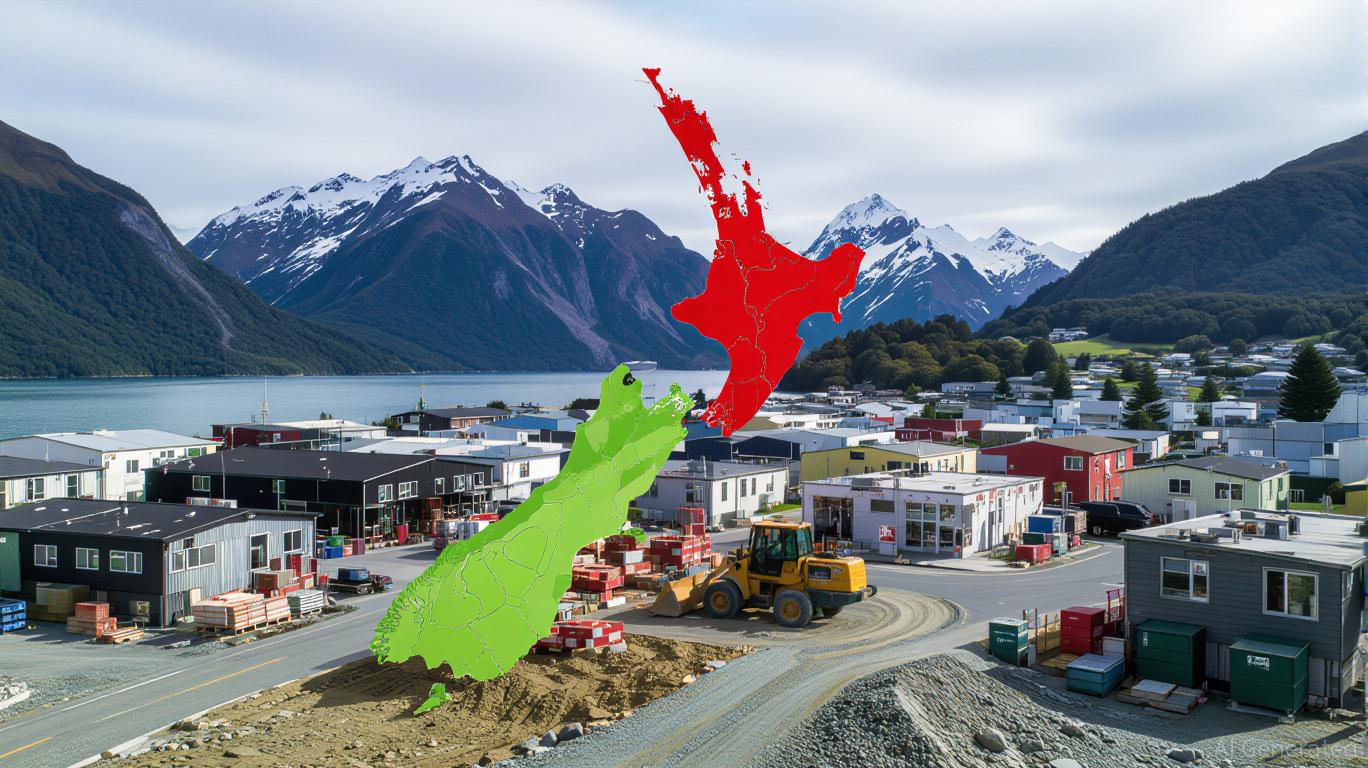
The New Zealand housing market in 2025 presents a paradox: a fragile stabilization amid enduring structural vulnerabilities. While national house prices have stabilized after a prolonged downturn, the pace of recovery remains uneven, with regional disparities underscoring the complexity of investment opportunities. For real estate investors and related asset classes, the question is not merely whether to enter the market, but how to navigate its asymmetries and anticipate the interplay of policy, demographics, and economic cycles.
Subdued Growth and Regional Divergence
The House Price Index (HPI) for New Zealand fell 1.82% year-on-year in Q1 2025, but the decline has slowed compared to earlier troughs. Median prices remain flat, masking a stark regional divide. The West Coast, for instance, has seen a 35.5% surge in prices, driven by limited supply and localized demand, while Auckland, the economic hub, lags with only modest gains. This divergence reflects broader economic realities: regions with robust employment and infrastructure (e.g., Southland, Canterbury) are outperforming those reliant on tourism or facing oversupply.
Sales volumes, too, are recovering unevenly. National residential sales rose 3.01% year-on-year in Q1 2025, with June 2025 seeing a 20.26% jump. However, this growth is concentrated in smaller regions like Gisborne (70% annual sales increase) and Southland (34.9%), while Auckland’s market remains sluggish. Such trends suggest that while the national market is stabilizing, localized opportunities and risks dominate.
Economic Vulnerabilities and Structural Risks
Affordability remains a critical constraint. Home prices are still approximately six times the average household income, with Auckland classified as “severely unaffordable.” This imbalance is not merely cyclical but structural, rooted in decades of financialization that have prioritized asset accumulation over housing as a social good. The result is a market where first-time buyers face a daunting barrier, and wealth inequality persists.
Monetary policy easing, with the OCR dropping to 3.25% in May 2025, has improved loan affordability, but its impact is tempered by lingering inflation and wage stagnation. While mortgage rates have fallen from 8.61% to 6.79% since 2024, the recovery in demand is cautious. Institutional and retail investors are showing optimism in regions with strong rental yields, but the broader market remains sensitive to policy shifts.
Immigration policy changes, such as the Active Investor Plus Visa reforms, are injecting capital into property development. The Balanced category, which allows investments in new residential developments, could boost housing supply in undersupplied regions. However, the success of these policies hinges on aligning capital inflows with actual demand. Overbuilding in areas with weak fundamentals could exacerbate existing imbalances.
Opportunities in a Fragmented Market
For investors, the key lies in regional selectivity. Areas like the West Coast and Southland, where prices are rising and construction activity is robust, offer potential for capital appreciation. These regions benefit from lower unemployment and infrastructure investment, making them less vulnerable to the oversupply dynamics plaguing Auckland.
The rental market, meanwhile, is cooling, with rent growth slowing to 3.7% year-on-year in Q1 2025. While this may reduce short-term returns for landlords, it also signals a more balanced environment for renters and could stabilize long-term demand. Investors in high-growth regions might find value in properties with strong rental yields, particularly in areas where immigration-driven population growth is expected to persist.
Caution and the Shadow of Policy Uncertainty
The risks, however, are significant. A weak labor market, with unemployment rising to 5.1% in Q1 2025, could depress household incomes and owner-occupier demand. Regions dependent on tourism or agriculture face additional vulnerabilities, as global economic shocks or climate risks could disrupt local economies.
Policy uncertainty looms large. Potential changes to loan-to-value (LVR) restrictions, interest deductibility for investors, or foreign investment rules could alter market dynamics overnight. The RBNZ’s delicate balancing act between growth and financial stability adds another layer of unpredictability. Investors must also contend with the concentration of risk: over 60% of total loans are tied to residential property, with nearly a third attributed to investor purchases.
Conclusion: A Market of Divergence and Prudence
The New Zealand housing market in 2025 is neither a boom nor a bust but a landscape of divergence. For investors, the path forward requires a granular understanding of regional dynamics, a cautious approach to leverage, and a willingness to hedge against policy and macroeconomic shifts. While the easing of monetary policy and immigration-driven demand offer opportunities, particularly in undersupplied regions, the structural challenges of affordability and inequality cannot be ignored.
In this context, the market may present a buying opportunity—but only for those who can navigate its complexities with patience and precision. As the economy emerges from a technical recession and inflation moderates, the key will be to align investments with long-term fundamentals rather than short-term volatility. For those willing to do so, the rewards could be substantial—but the risks, if misjudged, equally so.
